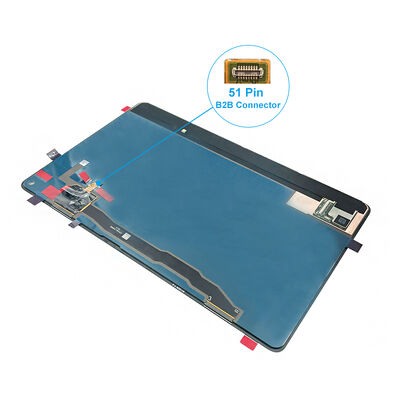Tüm ürünler
-
LCD TFT Ekran
-
Dokunmatik Ekran TFT Ekran
-
Yuvarlak TFT Ekran
-
tft renkli ekran
-
AMOLED ekran Modülü
-
Mikro OLED ekran
-
Bar Tipi TFT
-
Kare TFT Ekranı
-
Yüksek Parlaklıkta LCD Ekran
-
COB LCD Ekranı
-
Güneş Işığında Okunabilir TFT
-
UART TFT Ekran
-
LCD Ekran Modülü
-
PMOLED ekran
-
Epaper Ekranı
-
LED Dijital Ekran
-
kapasitif dokunmatik panel
11.2 Inch High Resolution AMOLED Display Module with oncell touch, 2560*1536 Dots and 450c/d Brightness
| Menşe yeri | Çin |
|---|---|
| Marka adı | HuaXin |
| Sertifika | ISO14001/ ISO9001/IATF16949 |
| Model numarası | HX20QBC73.A |
| Belge | HX20QBC73.A SPEC.pdf |
| Min sipariş miktarı | 180 |
| Fiyat | $108 |
| Ambalaj bilgileri | blister+köpük kutusu+kabarcık çanta+iç karton+ana karton |
| Teslim süresi | 6weeks ~ 8 hafta |
| Ödeme koşulları | T/T |
| Yetenek temini | Ayda 50 bin |

Ücretsiz numuneler ve kuponlar için benimle iletişime geçin.
Naber:0086 18588475571
sohbet: 0086 18588475571
Skype: sales10@aixton.com
Herhangi bir endişeniz varsa, 24 saat çevrimiçi yardım sağlıyoruz.
xÜrün ayrıntıları
| Ekran Teknolojisi | HD AMOLED ekran | İsim | LCD OLED ekran |
|---|---|---|---|
| Boyut | 11.2 " | Çözünürlük | 2560RGB*1536 |
| Parlaklık | 450c/d | Arayüz | MIPI 2 bağlantı noktalı |
| Sürüş ic | RM692H0 |
Mesaj panosundan ihtiyacınız olan ürünleri işaretleyip bizimle iletişime geçebilirsiniz.
Ürün Açıklaması
HX20QBC73.A is 11.2 inch amoled display module with oncell touch Display color: 1.07B (RGB x 10 bits) and Display format: 11.2” (2560RGBx1536) and Pixel arrangement: Real RGB
Display Interface: MIPI 2-port D-PHY TP Interface: SPI Driver IC : RM692H0 , Touch screen: On-cell; Touch IC: GT6975P
Product Parameter
| Part No. | HX20QBC73.A |
| Display Size | 11.2 inch AMOLED display |
| Outline Size (mm) | 249.22*154.08 |
| AA Size (mm) | 244.22*146.53 |
| Resolution | 2560RGB*1536 |
| Interface | MIPI 2-port |
| Brightness | 450c/d |
| View Angle | all |
| Driving IC | RM692H0 |
| Touch screen | On-cell |
Product Picture
![]()
![]()
![]()
![]()
Drawing & Pin Definition
OLED Product Knowledge
OLED Advantages:
- Lighter and thinner than LCDs
- High contrast ratio
- High color saturation
- Lower power consumption
OLED Disadvantages:
- AMOLED is more expensive than LCD and TFT
- Lifetime is shorter than LCD and TFT
Company Information
Huaxin Advantage:
- Factory base located at inland city which has cost effective
- Most advanced new equipment which can keep quality stable
- Most processes using fully automatic equipment which has efficiency and stable quality
- Professional engineers and production leaders with 20+ years experience in LCD field
- Self design for customized product
Our Certificates:
- ISO14001
- ISO9001/IATF16949
- SGS of LCD module
Production Capacity
| Annual Production Capacity | 2021 (Current) | 2022 (Goal) | 2023 (Challenge) | 2024 (Challenge) | 2025 (Challenge) | Remark |
|---|---|---|---|---|---|---|
| LCD Production Capacity | 4.5 | 9 | 9 | 9 | 9 | Unit: thousands of logarithms/Day |
| LCM Production Capacity | 70 | 150 | 300 | 450 | 450 | Unit: Thousand piece/Day |
| Backlight Production Capacity | 100 | 200 | 300 | 500 | 500 | Unit: Thousand piece/Day |
| OLED Production Capacity | 10 | 20 | 30 | 40 | 50 | Unit: Thousand piece/Day |
Product Application
- Safety box & instrument
- Lock & smart home
- Transmitter & watch
- Watch & radio
- Collimator & navigator
AMOLED Display Characteristics
- Self-Emissive Pixels
- High Contrast Ratio
- Color Accuracy and Vibrancy
- Wide Viewing Angles
- Power Efficiency
- Thinness and Flexibility
- Fast Response Time
Power Efficiency Comparison
1. Power Consumption:
AMOLED displays consume power on a per-pixel basis, meaning that pixels displaying black or dark content consume very little power, while pixels displaying bright or white content consume more power. LCD and LED displays require a constant backlight that consumes power regardless of the displayed content.
2. Content Dependency:
AMOLED displays are more power-efficient for content with dark or black areas, as individual pixels can be turned off to save power. LCD and LED displays consume a relatively constant amount of power as the backlight remains active.
3. Brightness Control:
AMOLED displays can dynamically adjust pixel brightness for better efficiency in low-brightness scenarios. LCD and LED displays typically have fixed backlight brightness, resulting in higher power consumption.
4. Display Size:
AMOLED displays tend to be more power-efficient for smaller sizes as consumption scales with pixel count. Larger LCD/LED displays may require more power-hungry backlights, reducing efficiency compared to same-size AMOLED displays.
Önerilen Ürünler










